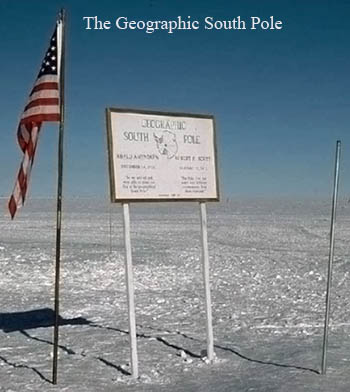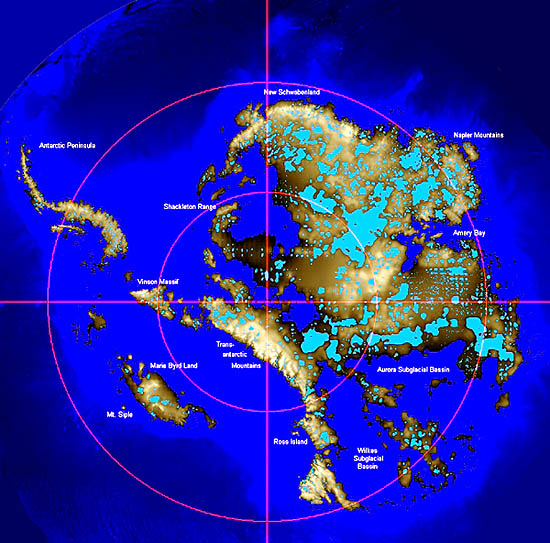A Weather Report
Today, a weather report. The University of Houston's College of Engineering presents this series about the machines that make our civilization run, and the people whose ingenuity created them.
I just checked today's weather report: June 30th, 2008: 79 F degrees below zero (-62 C) with a seven mile-an-hour breeze that makes it feel thirty degrees colder still. It's a nice clear day with good visibility. But it's smart to stay indoors. This obviously is not Houston. As I write, it's what's posted on line by the Amundsen-Scott South Pole Station. Just after our Summer Solstice, the South Pole is shrouded in the dead darkness of winter.
The highest and lowest recorded temperatures at the Pole were + 6 F (-14 C) and -115 F (-82 C). The Pole really does see only one day each year -- from constant light in its January summer to constant dark in its June winter. That rather mutes our habitual complaints about hot Houston summers.
 The South Pole Station has slowly grown since it was created in 1956. At first it was no more than an underground structure below a wooden roof. The main building has lately been a 160-foot geodesic dome housing several heated sheds.
The South Pole Station has slowly grown since it was created in 1956. At first it was no more than an underground structure below a wooden roof. The main building has lately been a 160-foot geodesic dome housing several heated sheds.
A large new building was begun in 1999 and dedicated in January, 2008. That was high summer, with an average high temperature of -14 F (-26 C) -- downright toasty weather for the ribbon-cutting. Stilts holds the building high above the swirling snow. It has 150 bunkrooms, laboratories, a mess hall, an infirmary ... .
From March to October, the Station's twelve-thousand-foot airplane landing strip is unusable and any occupant is locked into the cold darkness. We all shuddered in 1999, when Dr. Jerri Nielson discovered she had breast cancer. She had to self-administer chemotherapy until October when an airplane could get her out. But her ordeal was more than matched by another doctor, Leonid Rogozov, who had to remove his own appendix in 1961.
The Pole sits 9300 feet above sea level near the Transantarctic Mountain range. The mountains separate the West and East Antarctic Ice Sheets. The ice below the pole reaches all the way down to a ground level that's fifty feet below sea level. The air is thin -- humidity usually zero. People at the Station eat some 5000 calories daily to replenish the heat they burn in the struggle to stay warm.
Antarctica is larger than all Europe. But, if we could remove the ice, we'd find a much smaller patchwork of land. The Transantarctic Mountains reach to almost 15,000 feet but they hold little snow. Global warming continues to expose new bare earth, and biologists are now unearthing fourteen-million-year-old freeze-dried mosses that once lived there.
There's much more: What, for example, is the time zone in this nether world where all time zones meet? It's officially Greenwich Mean Time. But here, without sunrise or sunset, people usually set their clocks to match their homes back on planet Earth. And this truly is another planet. It really is an alien world -- quite brimming with all kinds of knowledge, yet untapped.
I'm John Lienhard at the University of Houston, where we're interested in the way inventive minds work.
(Theme music)
Note: In the audio, I report all temperatures in degrees Fahrenheit. In the web version, I include degrees Celcius in parentheses. All images courtesy of Wikipedia Commons.
See also Wikipedia articles on the South Pole, Antarctica, and the Amundsen-Scott Station.
D. Fox, Freeze-Dried Finding Support a Tale of Two Ancient Climates. Science, Vol. 320, 30 May, 2008, pp. 1152-1154.

The Amundsen-Scott South Pole Station, prominently displaying the new building 
The solid ground of Antarctica. The center of the drawing is the South Pole. The ground beneath the Pole would be below sea level if the two-mile-thick ice sheet were removed.